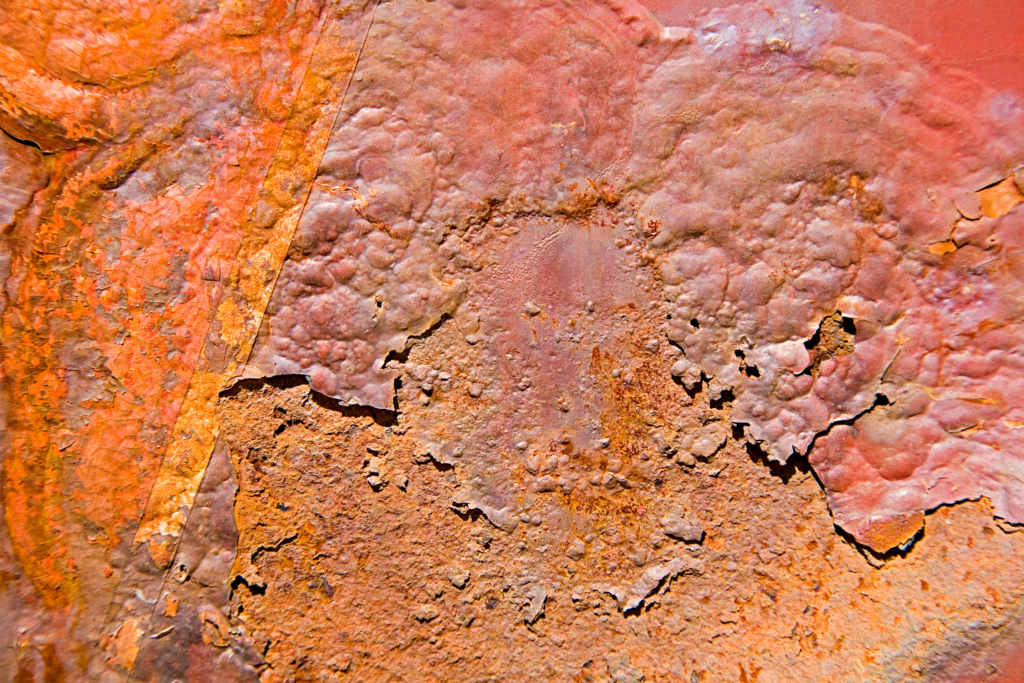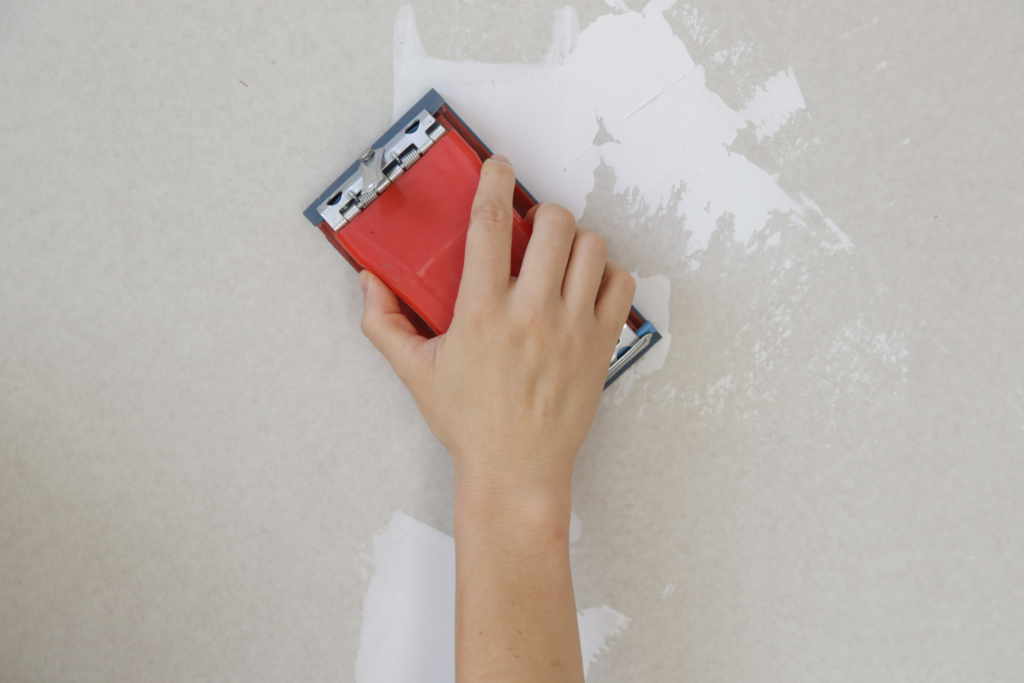Why Does Spray Paint Bubble Up? (Plus How To Fix It & Prevent It)
Spray paint is a popular choice for DIY enthusiasts and professionals alike, as it provides a quick and easy way to achieve a smooth, even finish on various surfaces. However, spray painting can sometimes lead to undesirable results, such as bubbling. But, why does spray paint bubble?
Spray paint bubbles if there is surface contamination, improper surface preparation, you apply paint too quickly, the humidity is too high, or you’re using poor painting techniques. To prevent spray paint bubbling, you will need to address each issue and then wait until the first coat has dried completely before applying a second coat.
In this article, we will explore the reasons behind spray paint bubbling, how to prevent it from happening in your next project, and how to fix it if it has already occurred.
Why does spray paint bubble?
There are several reasons why your spray paint might bubble, but most cases can be attributed to a few common causes.
Here are the most common reasons why spray paint bubbles:
- Surface contamination
- Improper surface preparation
- Applying paint too quickly
- High humidity or moisture
- Incorrect spray painting technique

Surface contamination
One of the primary reasons behind bubbling in spray paint is surface contamination.
The presence of dirt, dust, grease, or oil on the surface you are painting can prevent the paint from adhering correctly, causing it to bubble.
How to prevent it
To avoid bubbling due to surface contamination, thoroughly clean the surface you plan to paint. Use a degreaser or cleaning agent to remove any grease, oil, or dirt, and ensure the surface is completely dry before you start painting.
Improper surface preparation
Another common reason for spray paint bubbling is inadequate surface preparation.
If the surface is too smooth, glossy, or has a layer of old paint, the new paint may have difficulty adhering, leading to bubbles.

How to prevent it
Properly prepare the surface by lightly sanding it to create a slightly rough texture that will allow the paint to adhere better. If there is old paint on the surface, remove any loose or peeling paint before sanding.
After sanding, wipe the surface with a damp cloth to remove any dust and let it dry completely before painting.
Applying paint too quickly
When you apply spray paint too quickly or in thick layers, the top layer may dry before the underlying paint, trapping solvents and causing the paint to bubble.
How to prevent it
To avoid this issue, apply spray paint in thin, even coats, allowing each coat to dry before applying the next one. This will ensure that the paint dries evenly and helps prevent bubbles from forming.
High humidity or moisture
Spray painting in areas with high humidity or painting surfaces that are damp can prevent the paint from drying correctly, leading to bubbling.
How to prevent it
To avoid bubbling due to high humidity or moisture, try to paint in low humidity conditions, ideally below 50% relative humidity. If you are painting a damp surface, use a hairdryer or heat gun to dry it before applying the paint.
Incorrect spray painting technique
Improper spray painting technique, such as holding the can too close to the surface or not maintaining a consistent speed while spraying, can lead to an uneven paint application and result in bubbling.
How to prevent it
To prevent bubbling due to incorrect spray painting technique, hold the spray can at least 8-12 inches away from the surface and maintain a steady speed while spraying. Move the can in a side-to-side motion, slightly overlapping each pass for even coverage.
How to fix spray paint bubbling
If your spray paint has already bubbled, you can still fix it by following these steps:
- Allow the paint to dry completely.
- Use fine-grit sandpaper to gently sand the bubbled areas until they are smooth.
- Wipe the surface with a damp cloth to remove dust and let it dry.
- Apply a thin coat of primer to the sanded area, allowing it to dry before applying new spray paint.
- Reapply spray paint in thin, even coats, allowing each coat to dry before applying the next one. Be sure to use the correct painting technique to prevent further bubbling.
- If needed, apply a clear coat or protective finish to seal the paint and provide additional protection against bubbling.
Spray paint bubbling on different surfaces – fixes for each!
Spray paint can be used on a variety of materials, including metal, plastic, wood, glass, and ceramics. However, each surface type may have its own unique challenges that can lead to bubbling.
Why does spray paint bubble on metal?
Metal surfaces can be prone to bubbling due to temperature fluctuations, as metal is an excellent conductor of heat. To prevent bubbling on metal surfaces, ensure the surface is clean, properly prepared, and within the recommended temperature range for spray painting (typically between 50°F and 90°F).
Why does spray paint bubble on wood
Wood can absorb moisture, which may lead to spray paint bubbling. To prevent this issue, ensure the wood is completely dry and properly sanded before painting.
Applying a primer designed for wood surfaces can also help create a barrier between the wood and the paint, reducing the chances of bubbling.
Why does spray paint bubble on plastic
Plastic surfaces may cause spray paint to bubble due to their smooth and non-porous nature. To prevent bubbling on plastic, lightly sand the surface to create a better bond for the paint.
Using a primer specifically designed for plastic surfaces can also help reduce the risk of bubbling.
Why does spray paint bubble on glass
Glass surfaces can be challenging to paint due to their smooth and non-porous nature. To prevent spray paint from bubbling on glass, ensure the surface is clean and free of contaminants. You may also need to apply a glass-specific primer to create a better bond between the paint and the glass surface.
Why does spray paint bubble on the second coating
- Insufficient drying time: Applying the second coat before the first coat has dried completely can cause the solvents in the second coat to react with the first coat, resulting in bubbling. To prevent this, ensure that you allow enough time for the first coat to dry thoroughly before applying the second coat.
- Incompatible paint layers: If the first coat and the second coat are of different types or brands, they may not be compatible, causing bubbling or other issues. Make sure to use compatible paint products and follow the manufacturer’s instructions for proper application.
- Surface contamination: Dust, dirt, or grease on the surface between the first and second coat can cause the second coat to bubble. Ensure the surface is clean and free of contaminants before applying the second coat.
- Improper application technique: Applying the second coat too thickly or unevenly can result in bubbles. To prevent this, use a proper spraying technique, maintaining a consistent distance from the surface and applying thin, even coats.
- Environmental factors: Extreme temperatures or high humidity can cause the second coat of spray paint to bubble. Ensure that you’re working in the recommended temperature and humidity range for the specific spray paint product you are using.
To avoid spray paint bubbling on the second coating, it’s crucial to follow proper painting techniques, allow sufficient drying time between coats, use compatible paint products, and ensure the surface is clean and prepared correctly.
Summary of how to fix spray paint bubbling
Spray paint bubbling can be frustrating, but understanding the causes and taking preventive measures can help ensure a smooth, bubble-free finish for your next project.
If you do encounter bubbling, don’t worry – with a little patience and the right technique, you can fix the issue and achieve a professional-looking result.
Let Us Know How We’re Doing!
Did this expertly prepared resource answer your question?
Do you have another question about home maintenance, home improvement projects, home appliance repair, or something else?
Get more information, send in questions and keep the discussion going by contacting the I’ll Just Fix It Myself company customer service team at at 1-800-928-1490 or Email us at [email protected]
